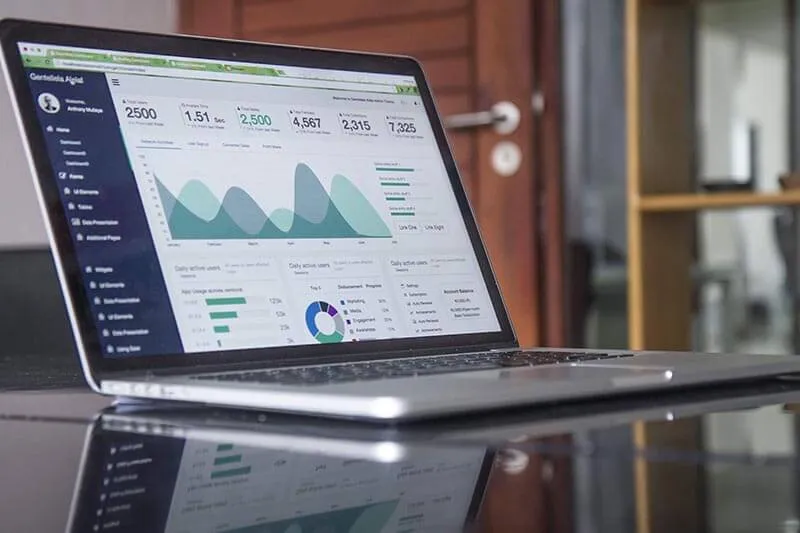Digital Transformation and Digital Adoption
Psychological Triggers for User Activation

by
Team Userlane
8 years ago ・ 14 min. The journey to user activation and customer retention starts with approaching your users.
The journey to user activation and customer retention starts with approaching your users.Table of Contents
How to Address Your Users to Spark User Activation
The first thing you need to do is collect information. The more you know about your users, the easier it is to approach them in the right way. Then you need to split your users according to specific target groups and customer personas. You also need to create segmentation on the basis of their stage in the customer journey. At different stages, you can then use different tools and social proof elements such as on-screen messages, push notifications, content, emails, or any other kind of value-adding services. With new users, activation starts the very moment they start to interact with your software. You can’t address such users with exit intent popups! You need to start a proactive conversation way before they signal their intention to abandon the ship. At that moment, it’s already too late to try and start a conversation.The Effect of Micro-Aggression on User Activation
Studies that we’ve conducted at Userlane show the effects of instances of micro-aggression during the onboarding phase. When signing up for your service, users have a very clear and specific goal in mind. The longer it takes for them to reach their goal, the more subconscious negative feelings they accumulate. We, as users, don’t consciously perceive this, but these moments of micro-aggression staple at a very fast pace – we’re talking about milliseconds here! And even if each instance seems innocuous, these feelings pile up and have a devastating effect. Each imperceptible micro-frustration brings us a step farther from the brand we’re interacting with until we feel compelled to abandon the service. Boosting user engagement and activation means eliminating stress and instances of micro-aggression.The Importance of Dialogue in User Activation
A dialogue is a two-way street. There’s a phase in which you need to collect data and find out what the user signed up for and what their expectations are. It’s essential to check all the indicators you’ve collected along the customer journey: Where they come from, landing page, signup process, articles they were interested in, emails that triggered action … You ought to find out what features they’re actually interested in. Otherwise it’s like asking just half of a question. For example, imagine you contact a food delivery service. By doing so, you obviously signal that you’re hungry. But when you talk to them, they keep you one hour online presenting the entire menu and different cuisines they offer from Indian, to Mexican, Italian, French … they spend time listing all the options just to find out that you actually wanted to order Sushi. Your product might include plenty of features, but you can’t bombard your users with copy and messages and present the whole palette in one go. Different users will interact with your software at different levels of proficiency and most of them end up choosing your service because of one single, specific characteristic.
For example, imagine you contact a food delivery service. By doing so, you obviously signal that you’re hungry. But when you talk to them, they keep you one hour online presenting the entire menu and different cuisines they offer from Indian, to Mexican, Italian, French … they spend time listing all the options just to find out that you actually wanted to order Sushi. Your product might include plenty of features, but you can’t bombard your users with copy and messages and present the whole palette in one go. Different users will interact with your software at different levels of proficiency and most of them end up choosing your service because of one single, specific characteristic.Onboard Users the Right Way to Increase User Activation
When it comes to Learn more about employee training and support, you need to take your users by the hand: People are perfectly capable of thinking, but they usually don’t have time for it! Free experimentation during the discovery phase can be highly counterproductive. We all have a very limited attention span and when being presented with a new solution, we need continuous inputs that bring us back to focusing on new elements and actions. If users don’t find what they’re looking for, they’ll leave. Of course, in the spirit of segmentation, you also have to let them choose. Ask them if they want to be guided with an onboarding tour or be free to explore. Let them decide. It’s all about giving options and empowering your users. Popups that contain a friendly face might look like a silver bullet to boost user engagement. But it’s not that easy! This approach is not effective for all users. Let’s go back to our party: You obviously need to send signals to a potential partner but you also have to send the right signals. You might want to try to balance a beer can on your head and smile to spark a reaction. But what kind of reaction are you going to trigger? You want to inspire positive reactions that resonate with each specific user based on their set of beliefs and expectations. When trying to approach somebody, you can be a lot more effective if you gather some information about what drink they like, what kind of sense of humor they have and so on so that you can plan your approach accordingly. It’s easier to engage and activate users when you have specific data.User Activation: It Starts with First Impressions!
A signup is not a guarantee of success. It barely shows interest. You still need to continuously sell your service to your new users. Even after people invest money in your solution, they need some kind of confirmation and want to be reminded that they made the right choice. Customer care, key account management, and after-sales activities reinforce the bond between the brand and clients. A brand that truly cares continues to support their customers and helps them achieve their goals. Newly-acquired users, in particular, need to experience the value of your solution first-hand. You need to grab their attention and show the real benefits of your solution and that’s only possible if you know what the user is interested in. Userlane, for example, offers a virtual assistant, an adviser that prompts users with different choices so that they can explain what they’re interested in learning more about. For each feature, there can be a completely different tour that shows how the option can be activated and implemented while also explaining why this feature is important and how it contributes towards a specific goal. You can basically sell a service by feature instead of randomly listing all the functions your solution entails! Missing on this opportunity and thinking that the effort of setting up such a specific onboarding experience is not worth it means that you probably haven’t grasped the true functionality of the SaaS business model. Going back to our party analogy, simply relying on a good design and a good product is like standing in a corner and waiting for others to approach you. Somebody might think you’re interesting but may expect you to break the ice. And soon, they’ll be tired of waiting and find somebody else they’re interested in. You miss a lot of opportunities by not actively interacting with your users.
Newly-acquired users, in particular, need to experience the value of your solution first-hand. You need to grab their attention and show the real benefits of your solution and that’s only possible if you know what the user is interested in. Userlane, for example, offers a virtual assistant, an adviser that prompts users with different choices so that they can explain what they’re interested in learning more about. For each feature, there can be a completely different tour that shows how the option can be activated and implemented while also explaining why this feature is important and how it contributes towards a specific goal. You can basically sell a service by feature instead of randomly listing all the functions your solution entails! Missing on this opportunity and thinking that the effort of setting up such a specific onboarding experience is not worth it means that you probably haven’t grasped the true functionality of the SaaS business model. Going back to our party analogy, simply relying on a good design and a good product is like standing in a corner and waiting for others to approach you. Somebody might think you’re interesting but may expect you to break the ice. And soon, they’ll be tired of waiting and find somebody else they’re interested in. You miss a lot of opportunities by not actively interacting with your users.The Connection Between Habit Formation and User Activation
Similar analogies work well because user onboarding is similar to human interaction. Words like ‘users’ (customers, consumers…) are deceiving and quite demeaning. Users simply interact with a product and consumers consume to produce revenue. In reality, there’s no B2C or B2B. When presenting your product, you’re actually dealing with humans and their emotions. You ought to stimulate, entertain, serve their purpose, and provoke emotions. User activation means habit formation . And people feel compelled to come back and use your service again and again because they love interacting with it. Activation is strictly connected to positive emotions. A well-designed and put-together newsfeed in a social media application, for example, stimulates the production of endorphins that in turn elicits satisfaction, thus leading people back to it multiple times a day. It’s a habit. Slack forces you to check your channels by leveraging an atavistic need for communication. If you don’t go back to it and check all the different conversations, you feel left out. Your brain is wired to seek rewarding experiences. And it decides on what it considers rewarding in milliseconds. It’s all about gut feelings. Our reflexes and our instinct work faster than thoughts and rational thinking. When somebody pitches a baseball at you, your brain doesn’t need to explicitly perform complex operations and calculations to predict velocity and trajectory. Experience and practice create the basis for our reflexes, and despite not knowing how fast the ball is traveling, we manage to catch it. This is the same thin slicing mechanism that instinctively creates a first impression of people or situations, helps us define what is rewarding to us, and warns us when a situation doesn’t seem trustworthy.
Activation is strictly connected to positive emotions. A well-designed and put-together newsfeed in a social media application, for example, stimulates the production of endorphins that in turn elicits satisfaction, thus leading people back to it multiple times a day. It’s a habit. Slack forces you to check your channels by leveraging an atavistic need for communication. If you don’t go back to it and check all the different conversations, you feel left out. Your brain is wired to seek rewarding experiences. And it decides on what it considers rewarding in milliseconds. It’s all about gut feelings. Our reflexes and our instinct work faster than thoughts and rational thinking. When somebody pitches a baseball at you, your brain doesn’t need to explicitly perform complex operations and calculations to predict velocity and trajectory. Experience and practice create the basis for our reflexes, and despite not knowing how fast the ball is traveling, we manage to catch it. This is the same thin slicing mechanism that instinctively creates a first impression of people or situations, helps us define what is rewarding to us, and warns us when a situation doesn’t seem trustworthy.Be Mindful When It Comes to User Activation
Our life is characterized by habits. We’re essentially programmed to be lazy and avoid improvisation. Our brain tries to automate everything and habits become good proxies for our decisions. We do things at specific times of the day and continuously follow rituals. A company can add value by becoming a habit that doesn’t interrupt or delay other activities. Social media platforms manage to fill little gaps in our everyday life like when we’re at the bus stop or when we stand in line waiting for our morning coffee. These little empty moments used to be far from being perceived as rewarding. Mobile technology and social media add a perceived value to these moments. Other companies can have location services connected to their application, for example, to remind people to check if they took their keys before leaving their home… Careful, though. Flashing lights, red dots, and numbers can also have a negative effect if they simply lead to a compulsive behavior. People often feel compelled to check their Facebook messenger as soon as they’re notified of an incoming message. These are what we call dark design patterns that take advantage of programming errors in our brain and lead us to pursuing actions that aren’t connected to any actual benefit.
Other companies can have location services connected to their application, for example, to remind people to check if they took their keys before leaving their home… Careful, though. Flashing lights, red dots, and numbers can also have a negative effect if they simply lead to a compulsive behavior. People often feel compelled to check their Facebook messenger as soon as they’re notified of an incoming message. These are what we call dark design patterns that take advantage of programming errors in our brain and lead us to pursuing actions that aren’t connected to any actual benefit.User Activation Relies on the Creation of a Positive Experience
A careful habit formation design positively impacts your users’ lives and leaves them with an actual choice. People are naturally attracted by novelty but leveraging their curiosity can be negative. A good example of positive habit reinforcement involves Zapier. The intrinsic value of their solution is helping you to save time. Zapier sends you weekly reports of what they have automated for you. They keep reminding you of their value and also inspire you to go back to the application by pinpointing things that could be adjusted and improved so that you can save even more time. Webflow shows you what new features they’ve added every time you log in. It’s nice and rewarding. You see that they care about their product and their customers. Slack has a similar feature with a weekly animation that attracts your attention to new features. Activation is connected to exploring new ways to create a positive experience for your customers. Going back once again to our party, as soon as you manage to talk to a person, you need to convince them to give you their telephone number and go out for a date and then maybe meet for a second date and so on. It’s a constant effort to create a positive impression.Increase Your User Activation by Showing Your True Personality
People can’t communicate directly with a machine or a user interface. But contrary to a widely diffused business etiquette, it’s time for companies to get out there and show some real interaction and emotions! UIs may look sexy and well-organized but seldom present any human touch. Even the copy you find on most websites is far from being human. You read a lot of very formal, proper, cautious, and accurate descriptions. Businesses are afraid of being opinionated and don’t take a stand because they don’t want to offend anybody in their target group. But if you know your customer persona and personally share their experiences in order to design for them, you know their opinions and expectations and you can show them that you understand what they need. If you don’t show any emotions, you can’t get actual humans to interact with you. People will only see the functional aspects of our solution and then move away as soon as they discover a new toy to play with. Showing your true colors is also important for retention. You can force a match between your product and a customer, but if you’re not actually solving their problem, they’ll churn. Companies need to be authentic in the way they present themselves and their product and interact with potential customers who can actually benefit from their solution. Know your audience! You need to provoke human reactions. You can’t please everybody otherwise you’re not targeting anybody. Your firm needs to have a personality. Companies like Mailchimp or Slack are not afraid of showing their playful side. Of course, that resonates perfectly with their target group (startups and SMBs)! Your company might want to show a very different side. The important thing here is just honesty! You need to deliver on your promises and provide a useful service that leads to gratification and a positive outcome for your customers.
Showing your true colors is also important for retention. You can force a match between your product and a customer, but if you’re not actually solving their problem, they’ll churn. Companies need to be authentic in the way they present themselves and their product and interact with potential customers who can actually benefit from their solution. Know your audience! You need to provoke human reactions. You can’t please everybody otherwise you’re not targeting anybody. Your firm needs to have a personality. Companies like Mailchimp or Slack are not afraid of showing their playful side. Of course, that resonates perfectly with their target group (startups and SMBs)! Your company might want to show a very different side. The important thing here is just honesty! You need to deliver on your promises and provide a useful service that leads to gratification and a positive outcome for your customers.User Activation Is a Step-By-Step Process
A relationship is built in steps. You need to nourish and foster each relationship with an increasing level of commitment. There’s a well-known study in which a group of people were asked to put up a sticker on their windows to support a cause. A week later, they were asked to show a bigger sticker. And a week later they were invited to put up a sign in their front yard. And while the majority of these people accepted to put the sign on their lawn, only a few people, who were never asked to put the stickers on their windows in the first place, agreed to do so in a control group . Activation derives from micro-agreements and micro-commitments. Users proceed in steps along the customer journey. Asking for too much too soon is like throwing a pebble in a lake with a very steep angle. The pebble will simply bounce on the surface of the lake. Similarly, if the commitment curve is too steep, users will bounce off your service. Users need to understand the value of your solution by following the right user onboarding steps and a specific checklist so that they can understand its value proposition. Otherwise they’ll churn immediately. People intuitively perceive greed and know if you’re actually trying to support them along their own journey or if you’re just trying to monetize your service as soon as possible.Time, Commitments, and User Activation
Activation is also proportional to the time you invest in exploring a solution. The more you know a product, the more you relate to it and want to properly implement it within your own ecosystem. Enterprises, for example, tend to work in very long cycles due to their hierarchical structure and regulations. And because of these long cycles, they invest a long time in trying to understand a product and exploring all the benefits a solution presents. Therefore, their lifetime value tends to increase as they invest time and energy in researching, internally promoting, and implementing a specific solution. They analyze KPIs and the impact of your product over a much longer period of time. Customers who quickly explore your software in an unstructured way or superficially experiment with your free or trial version will not feel any need for commitment. By guiding users through your software and taking the journey together with them, you start fostering a relationship that is based on knowledge and micro-commitments. Customers shouldn’t churn simply because they didn’t get to know your software in the first place! Interaction can be different at different stages and with different customers. For example, some companies directly address users who gave them a very positive rating or reviews to start a conversation and understand what triggered their enthusiasm. By involving these users in the company and product development, they create a solid bond that reinforces their initial positive experience. You can never stop investing in a relationship or take it for granted. You need to make adjustments and maintain a positive mood throughout the entire journey. The same holds true for customers who have already churned. They need to be given the chance to express their objections and you need to interact with them and sustain a positive overall relationship despite the fact that they are no longer going to be customers.Triggering User Activation: A Territory Far Beyond Simple Tools and Tactics
Asking users to invest a bit in your solution together with gamification and rewards linked to progress and completion are classic tools that many SaaS companies implement to trigger engagement and activation. But if your product and your onboarding process lacks interaction, it’s very hard for users to feel connected to your brand. Product design and UX design obviously greatly contribute to activation. Slack’s attention to detail is what separated them from other services that were addressing the very same pain point in a very similar way. But persistence is another very important aspect. We all know that the selling process starts with the first ‘no’. But this is also a valid point for activation. You need to go back to your users and add something to the conversation you started with them. Always lead them into seeing a higher level in terms of value. You can’t just stop interacting with them the moment you see no reaction. It might just be a problem with timing or maybe the information you’re providing isn’t exactly what they were looking for. You just need to communicate different offers to boost activation at the right time. This continuous feedback loop leads to retention. People are continuously being reminded of you and have a reason to come back to their trial as soon as possible to see what your product can actually do for them.
You can’t just stop interacting with them the moment you see no reaction. It might just be a problem with timing or maybe the information you’re providing isn’t exactly what they were looking for. You just need to communicate different offers to boost activation at the right time. This continuous feedback loop leads to retention. People are continuously being reminded of you and have a reason to come back to their trial as soon as possible to see what your product can actually do for them.Sense of Belonging: Another Trick for User Activation
Another trick for activation is creating a sense of belonging. People love to be part of a group. Especially in the case of an elite group. If you can convey this sense of community through branding, merchandising, exclusive content, or private channels or groups, people will feel part of a bigger entity and will try to come back to your service to maintain their status. This works for products or services that use miles, loyalty cards, or special status cards for their customers. The same principle can be applied to SaaS businesses that allow people to access a community. Users will be happy to come back to the product knowing that each interaction will bring them closer to – and more involved in – the group. You can, for example, bring together product owners who face the same challenges and offer some sort of community support that adds value and helps them move closer to their goals.Immediate Engagement and Its Impact on User Activation and Retention
Early engagement also has a tremendous impact on activation and retention. That’s why the most important part of the relationship starts with a data-driven, customized, and interactive user onboarding. Ask as many questions as you can when onboarding new users because this will allow you to create the perfect customer experience tailored to their expectations . The key is retaining their attention. Why are there more car accidents in North America than in Germany even though Autobahns have no speed limit? Again, it’s about interaction and being involved in the moment. If you drive 70 mph on a straight interstate for an hour, soon you’ll start thinking about other things as you aren’t completely absorbed by what you’re doing. On a German Autobahn, you have curves and narrow lanes and even if you drive 110 mph you see cars in the rear-view mirror approaching you at 150. You’re totally concentrated on the street and each interaction with the traffic draws your attention back to the driving experience. Interacting with users who are trying out your solution for the first time works the same way. You continuously engage with them and draw their attention to new activities so that they maintain a continuous level of attention throughout the whole process.
Interacting with users who are trying out your solution for the first time works the same way. You continuously engage with them and draw their attention to new activities so that they maintain a continuous level of attention throughout the whole process.User Activation Is All in the Details
In general, small details play a major role. Creating a habit is quite easy for communication or social media platforms. But it’s very hard for business software providers. That’s why the human element plays such a vital role. Because the intrinsic mechanisms of the product are not directly connected to rewards. You need to make things happen. People are very responsive to honest compliments and rewards as small as a virtual pat on the shoulder to congratulate them on progress or achievements. The real secret is taking the initiative to communicate and interact with your users as soon as possible! Download our User Onboarding Experience guide and discover the six onboarding steps that lead to high conversion, activation, and retention! Visit our knowledge hubNew to Userlane? Take a step in your software adoption journey and join the pool of our happy customers.
Find more in
About the author:
The Userlane team brings you digital adoption insights, product updates, and plenty of onboarding and engagement advice for user-centric businesses.

